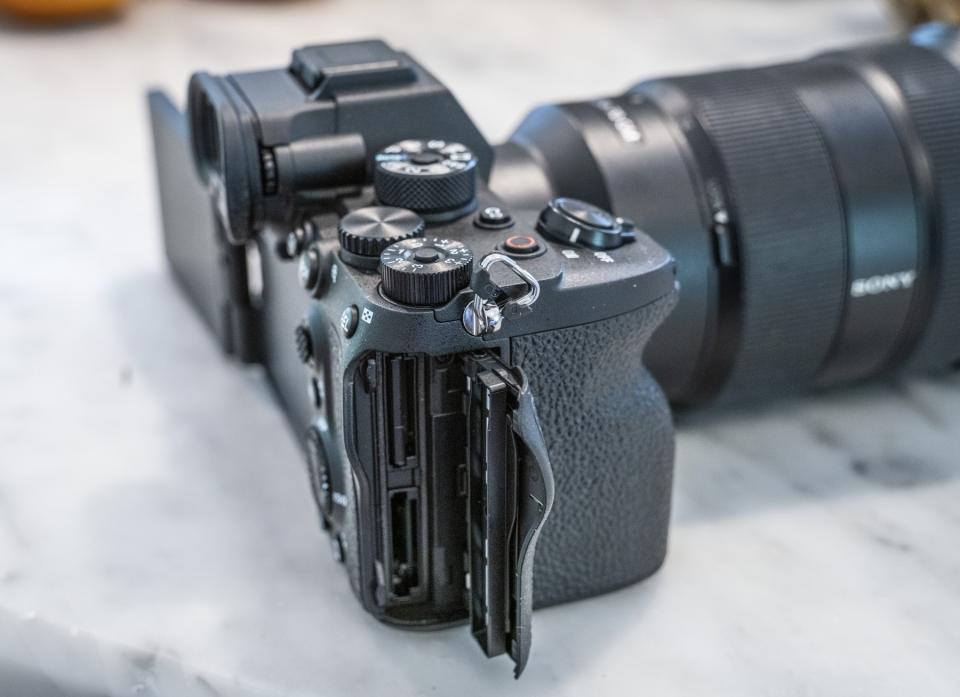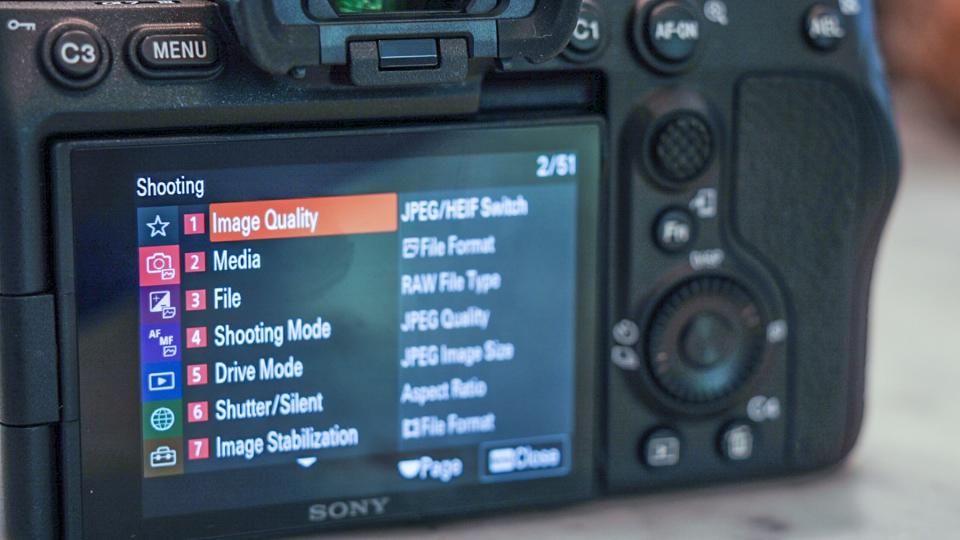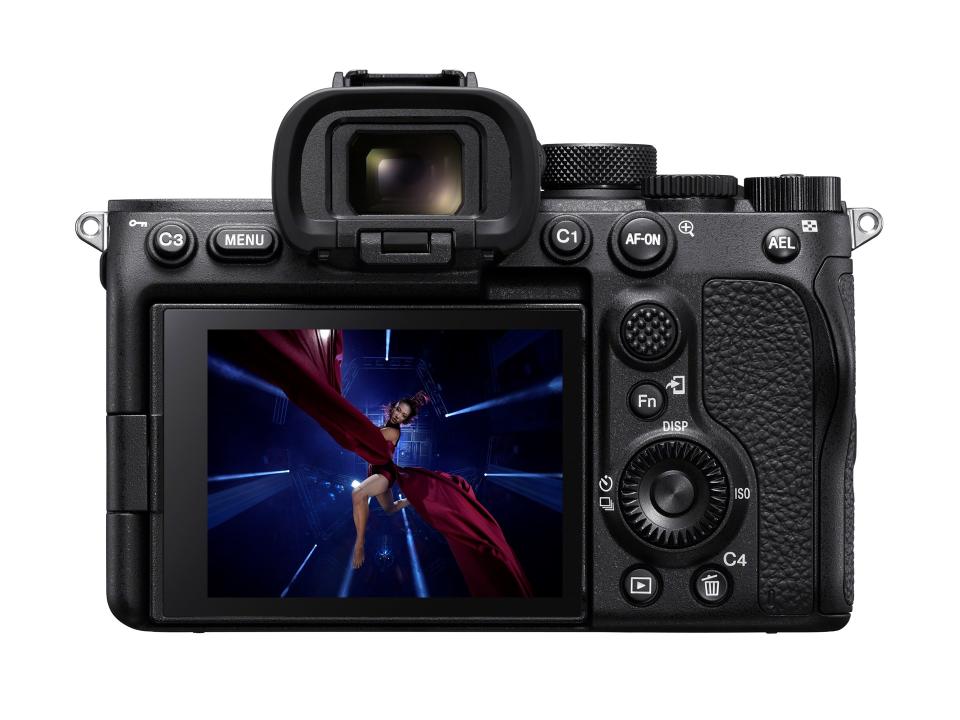Sony's long-awaited A7S III is a videographer's dream
It has the world's first 9.44-million dot EVF and dual SD/CFexpress card slots.
Sony has launched the A7S III, its latest full-frame camera with much improved video specs and several “world’s first” technology features. As expected, it features a new Bionz XR chip and 12.1-megapixel Exmor R sensor with huge pixels and a 40-409,600 extended ISO range that should let the A7S series keep its low-light crown.
While the A7S III doesn’t offer 8K like Canon’s latest EOS R5 (or even 6K), it now offers top-notch 4K specs. It can capture 4K video at up to 120 fps and full HD at 240 fps, with a full sensor readout and no pixel binning in all video modes. And while rolling shutter was a problem with the A7S II, the A7S III has double the readout speed for three times less rolling shutter. In a demo I saw, it was barely noticeable.
The A7S III will record video internally with up to 10-bit, 4:2:2 color sampling and a maximum of 600 Mbps in its XAVC All-Intra (H.264) format. That bests the maximum 400 Mbps you can capture on Panasonic’s GH5, for instance. In addition, Sony has tested 4K 60p capture at up to one hour, though it said there’s no recording time limit in theory. That’s possible thanks to a new heat management structure built into the camera.
If you use Sony’s S-Log2/S-Log3 picture profiles, you’ll see up to 15+ stops of dynamic range, far more than most other consumer cameras. For HDR shooters, it’ll also capture 10-bit HLG with 4 presets and let you record 1080p/720p proxies at the same time. In addition, you’ll be able to capture full-frame (4,264 x 2,408) 16-bit RAW video externally via the full-sized, Type a HDMI port, though Sony didn’t say which external recorders will be supported.
The A7S III will be able to handle those relatively high internal data rates thanks to the world’s first CFexpress Type A/SD UHS II dual slots. Yes, there are two slots each for UHS II cards and CFexpress Type A, though you can only use one or the other at a time. Still, two cards can be used at once for simultaneous recording (backup), relay recording (card to card) and sort recording (still or video, JPEG/HEIF and RAW formats).

What, you might ask, is CFexpress Type A? Well, it’s an all-new format being launched with this camera, and uses CFexpress tech with smaller cards than the current Type B format. While it’s slower than Type B, the 800 MB/s and 700 MB/s read/write speeds are still up to 2.8 times faster the SD UHS-II. At the same time, it also supports the SD UHS II format.
That makes sense, because UHS II cards are cheaper and easier to find, and CFexpress Type A cards will likely be scarce when the cameras go on sale in September. When they do arrive, Sony’s 80GB CFexpress Type A card will cost $200, while 160GB cards will cost $400.
The A7S III is the world’s first camera with a 9.44-million dot EVF developed by Sony. It offers a very high 0.90x magnification, a 41 degree field of view and 25mm high eye-point. With that level of resolution (equivalent to about 3.4 megapixels), it should be clear enough even for optical viewfinder purists.
This model is the first in the A7S series with phase-detect autofocus, and Sony hasn’t skimped here, either. It offers 759 phase- and 425 contrast-detection points, with 92 percent coverage and AF available down to -6 EV in low light. If you’re into photography, that allows for 10 fps burst speed with AF/AE enabled for up to 1,000 uncompressed RAW files captured (with a CFexpress Type A card).

As you’d expect, you also get real-time eye autofocus for both video and stills, with 30 percent improved recognition, according to Sony. Better still, it works in all video modes including 4K/120p and Full HD at 240p. You can select from seven AF transition speeds if you want to rack focus from one subject to another. And if you’re trying to track other objects like cars, you can touch to select them on the LCD display.
In fact, the LCD display is the first in Sony’s lineup to finally support full touch functionality for menu operation. It’s also fully articulating, so it swivels to the side and rotates 360 degrees. Together with the in-body stabilization and improved rolling shutter, that should make the A7S III a very good vlogging camera.
To make touch operations work better, Sony has completed redesigned the A7S III’s menu system, making it more logical and better for touch. Sony arguably had the worst camera menu system before this, but now it looks like one of the best. For example, sub-menus are far easier to find as they now pop out to the side. It also has a dedicated menu for movie mode, with settings changing accordingly. It also looks to be far easier to customize menus and buttons.

As with all of Sony’s recent full-frame mirrorless models, the A7S III offers built-in 5-axis image stabilization. It promises no image quality compromises, as it can maintain 4K, 3,840 x 2,160 resolution with only a very slight crop in active stabilization mode.
Other features include dedicated microphone and headphone jacks, along with a USB Type C port with power delivery support and LAN adaptor connectivity. You can also connect Sony mics directly to the digital M1 shoe and even do 4-channel 24-bit recording using Sony’s XLR-K3M adapter. Finally, it’s worth noting that the A7S III weighs in at 614 grams, making it lighter than the Canon EOS R5 and nearly half the weight of Panasonic’s S1H.
A camera with this kind of capability doesn’t come cheap, of course, but the prices are in line with past A7S models. It will arrive sometime in August for $3,500 for the body only (“approximately” £3,800 in the UK). That’s $500 more than the A7S II, but $400 less than Canon’s EOS R5 and the Panasonic S1H — likely its two closest rivals.
Update 10:30AM: Added availability and pricing for CFexpress cards.
